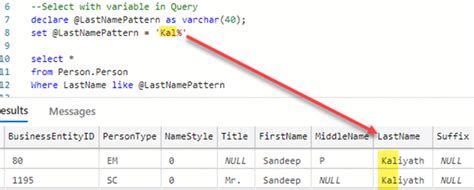Mastering Excel VLOOKUP from multiple sheets is a valuable skill for anyone working with large datasets across multiple spreadsheets. The VLOOKUP function is a powerful tool that allows you to search for a value in one column and return a corresponding value from another column. However, when dealing with multiple sheets, the process can become complex and time-consuming. In this article, we will explore how to efficiently use VLOOKUP from multiple sheets, providing you with practical tips and examples to enhance your Excel skills.
To begin with, it's essential to understand the basic syntax of the VLOOKUP function: `VLOOKUP(lookup_value, table_array, col_index_num, [range_lookup])`. When working with multiple sheets, the challenge lies in specifying the correct table array that spans across sheets. Excel provides several approaches to achieve this, including using the `INDIRECT` function, creating a consolidated table, or employing advanced techniques like using `INDEX` and `MATCH` functions in combination.
Efficiently Using VLOOKUP from Multiple Sheets
One of the most straightforward methods to perform a VLOOKUP from multiple sheets is by using the `INDIRECT` function. This function allows you to create a reference to a range of cells that is specified by a text string. By combining `INDIRECT` with VLOOKUP, you can dynamically reference different sheets based on a cell value or a defined name.
Using INDIRECT with VLOOKUP
Here's an example of how to use `INDIRECT` with VLOOKUP:
Suppose you have three sheets named "Jan", "Feb", and "Mar", and you want to retrieve data from these sheets based on a month name entered in cell A1. You can use the following formula:
`=VLOOKUP(A2, INDIRECT(A1&"!A:B"), 2, FALSE)`
In this formula, `A2` is the value you're looking up, `A1&"!A:B"` generates the range reference for the appropriate sheet (e.g., "Jan!A:B"), and `2` is the column index from which to return a value.
| Month | Sales |
|---|---|
| Jan | 100 |
| Feb | 120 |
| Mar | 150 |
Consolidating Data for Simplified VLOOKUP
Another approach to simplify VLOOKUP from multiple sheets is to consolidate your data into a single sheet or table. This can be done using Excel's built-in consolidation tools or by manually copying and pasting data. Once your data is consolidated, performing a VLOOKUP becomes straightforward.
Consolidating Data Using Excel's Consolidate Tool
To consolidate data using Excel's Consolidate tool:
- Go to the "Data" tab and click on "Consolidate".
- Choose the function you want to use (e.g., Sum, Average).
- Select the ranges you want to consolidate from each sheet.
- Click "OK" to consolidate the data.
After consolidation, you can perform a VLOOKUP on the combined data range without needing to reference multiple sheets.
Key Points
- Using `INDIRECT` with VLOOKUP allows for dynamic sheet referencing.
- Consolidating data simplifies VLOOKUP operations.
- Ensure data consistency and accuracy when consolidating.
- Consider using `INDEX` and `MATCH` for more flexible lookups.
- Practice using named ranges for better formula readability.
Advanced Techniques: INDEX and MATCH
For more complex scenarios or when you need more flexibility, consider using the `INDEX` and `MATCH` functions in combination. This duo offers a powerful alternative to VLOOKUP, especially when dealing with multiple criteria or sheet references.
Using INDEX and MATCH
The general syntax for `INDEX` and `MATCH` is:
`=INDEX(range, MATCH(lookup_value, lookup_array, [match_type])`
When combined, these functions provide a robust method for retrieving data from multiple sheets. For example:
`=INDEX(Sheet2!B:B, MATCH(A2, Sheet2!A:A, 0))`
This formula looks up the value in `A2` within column A of `Sheet2` and returns the corresponding value in column B.
How do I handle errors when using VLOOKUP from multiple sheets?
+To handle errors, ensure that the sheet names and cell references are correct. Use the IFERROR function to return a custom message or value when an error occurs, like this: =IFERROR(VLOOKUP(A2, INDIRECT(A1&"!A:B"), 2, FALSE), "Not Found").
Can I use VLOOKUP with multiple criteria across sheets?
+Yes, but VLOOKUP inherently only supports one criteria. You can combine VLOOKUP with other functions like FILTER (in Excel 365) or use array formulas with INDEX and MATCH to achieve multi-criteria lookups.
What are the limitations of using VLOOKUP?
+VLOOKUP has several limitations, including its inability to look to the left of the lookup column, performance issues with large datasets, and the requirement for an exact match when using FALSE for range_lookup.

